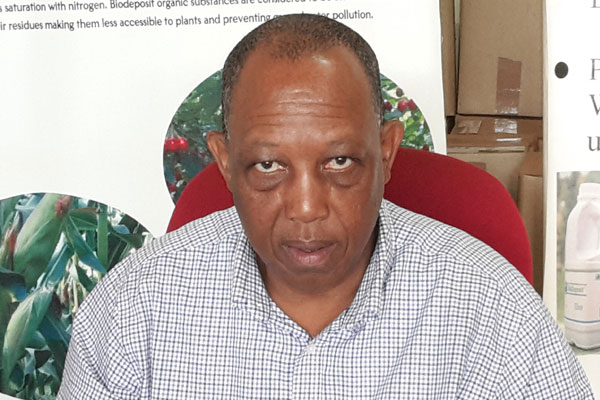Kenya turns to bamboo for environmental conservation

As climate change continues its ravage on the environment and lives of people across the world, Kenya is turning towards the bamboo to not only address some devastating effects of environmental degradation, but also improve livelihoods.
Job Kareithi, a climate change expert and the lead consultant at Capacity Building Consultants, says planting bamboo has gigantic potential to absorb carbon emission when compared to trees, giving growers a chance to earn extra cash through carbon credits.
He says bamboo planted in the quarter an acre can absorb 400 tonnes of carbon annually and this gives an indication of how effective the plant is in combating climate change.
“In China, for instance, it is projected that the bamboo forest shall store more than one million tonnes of carbon by 2050,” he remarked.
Renewable resource
Studies indicate that bamboo grows really fast at an estimated rate of 1.2 metres a day, which makes it a perfect buffer against climate change.
To this effect, countries such as China and South Africa have been mobilising bamboo planting to help in the fight against climate change.
Bamboo does well in all areas, but different varieties survive better in specific agro-ecological zones.
There are 1,250 different species of the plant. As a source of livelihood, bamboo can be used to make hundreds of products among them furniture, fabrics, papers, processed flooring and climate-smart houses. 
It can also provide an alternative renewable source of energy, thus reducing overdependence on fossil fuels.
When planted by the riverside, Kareithi says the roots can also absorb some chemicals, which are hazardous to the environment and human health.
Besides offsetting carbon, bamboo is also a good source of wood, which will help reduce cutting down of trees, which take a bit longer to grow.
“The rate of re-growing after harvesting is very high and this makes it the best renewable resource that people can use,” said Kareithi.
It is estimated that there are 22 million hectares of bamboo forest around the world, indicating its huge potential in the fight against climate change.
While there have been frantic efforts by various stakeholders to increase the forest cover in the country, the climate change expert says adopting this plant would be of great help.
Alfred Gichu, head of Climate Change Response Programme in the Ministry of Environment and Forestry, says the government has adopted various measures to fight climate change, key among them being promoting bamboo planting in the country.
Currently, bamboo covers about 329,325 acres of land, with 95 per cent concentrated in mountain ranges and gazetted forests including Aberdares range, Mau forest, Mount Kenya, Mount Elgon and Cherangany hills.
Gichu says the ministry has formulated National Bamboo Policy 2019 to help propagate this agenda.
The policy seeks to promote the large-scale growing of bamboo for several reasons among them economic sustainability, green growth, promote a clean and healthy environment as well as ease pressure on the forests.
The policy, dated March 2019, acknowledges the benefits of bamboo, including its ability to handle soil erosion, recharge water and mitigate climate change.
It also highlights the reduction of bamboo coverage from 741,300 acres to 247,100 acres, with just about 50 per cent concentrated in the Aberdare Range.
Necessary investment
The policy was formulated to address investment in bamboo due to its potential in various sectors including manufacturing, in eliminating poverty and rehabilitating degraded lands and landscapes.
Gichu, however, says there are some challenges hindering the development of bamboo including inadequate research, low-level of technology adoption, inadequate supply of quality planting materials and high prices of bamboo seedlings.
“Bamboo has a huge potential for environmental, social and economic development, which is hugely underutilised. This policy gives the guidelines on how to tap it,” he said.
Poor quality of bamboo has been attributed to unmanaged forests as well as lack of harvesting, something that has resulted in dead and deteriorated culms, making them susceptible to fires, pest infestation and diseases.
Besides increasing bamboo area cover, the policy looks to not only enable the production of quality planting material to provide the right quantity but also facilitate the development of holistic value-chain from planting to production.
It also seeks to coordinate efforts by national and county governments in implementing the policy and other strategies, especially since several counties including Migori, Vihiga Kirinyaga, Kitui and Elgeyo Marakwet have adopted small-scale bamboo growing. - Wangari Njuguna and Nduta Waweru




